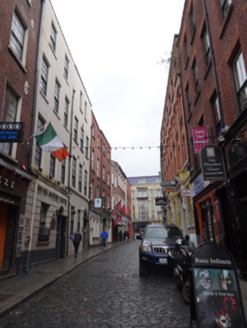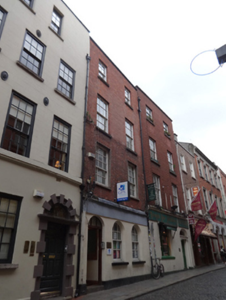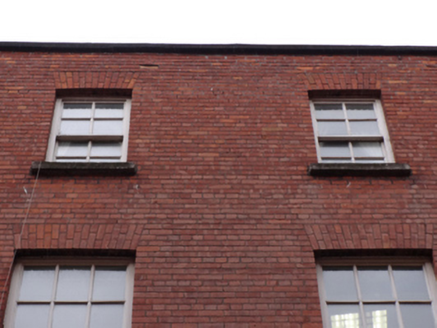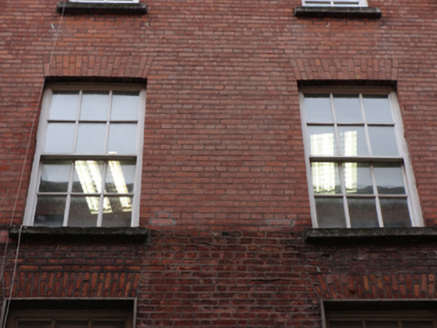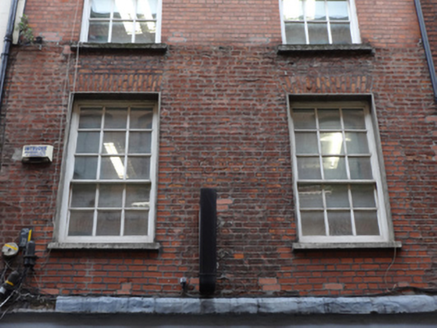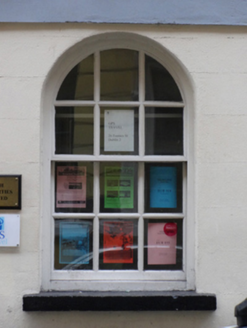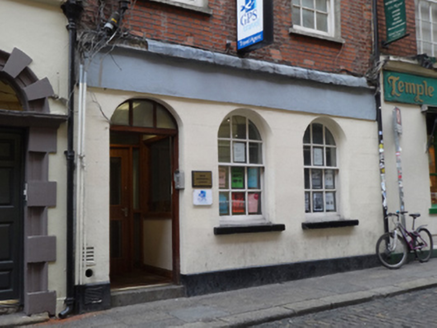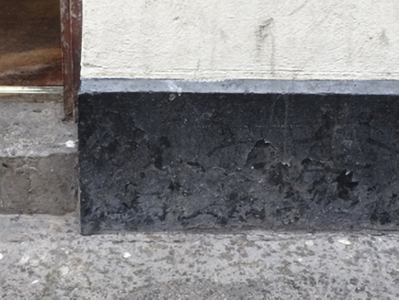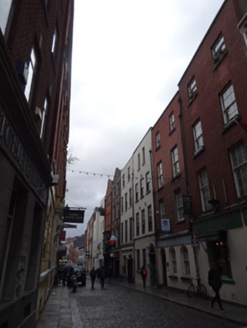Survey Data
Reg No
50020121
Rating
Regional
Categories of Special Interest
Architectural
Original Use
House
In Use As
Office
Date
1700 - 1740
Coordinates
315627, 234083
Date Recorded
24/03/2015
Date Updated
--/--/--
Description
Attached two-bay four-storey former house, built c.1720, having single-bay four-storey return to rear (east) elevation. Now in use as offices. Hipped slate roof, set perpendicular to street, with rendered chimneystack, red brick parapet wall with sheeted masonry coping. Flat roof to rendered return. Red brick, laid in Flemish bond to first floor wall to front (west) elevation, rebuilt in English garden wall bond to upper floors, having lined rendered wall to ground floor with masonry plinth course, smooth rendered fascia and masonry cornice with lead flashing. Square-headed window openings to upper floors having granite and replacement sills, raised render reveals, timber sliding sash windows, four-over-four pane to third floor, six-over-six pane to first floor and nine-over-six pane to first floor. Round-headed window openings to ground floor with masonry sills, six-over-six pane timber sliding sash windows. Segmental-headed door opening having recent timber panelled door and fanlight with vertical glazing bars, and limestone step. Granite kerb stones to front site. Situated to east side and south of Eustace Street
Appraisal
Dublin Civic Trust's 'Survey of Gable-Fronted and Other Early Buildings of Dublin City' (2012) states 'This early eighteenth-century former townhouse has been extensively renovated with the loss of all original fabric to the interior. Possibly built as one of a pair with No.27, the building has had its chimney removed and has been refaced at least twice. However, the roof configuration and the façade composition with diminished fenestration to the uppermost floor would suggest that this was built as a gable-fronted house conforming to the pattern of the remainder of the terrace. Forming part of a rare stretch of early townhouses lining Eustace Street, the building contributes to what may be considered one of the earliest surviving streetscapes in the city.' It was used in the mid-nineteenth century as a merchants premises, printers, publishers, and as an office for the Imperial Fire & Life Insurance Company of London.
